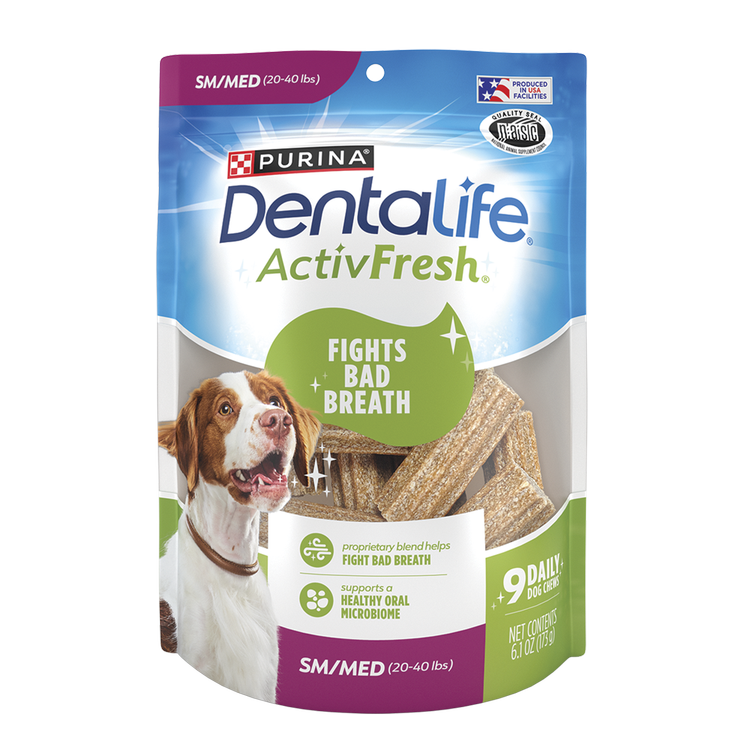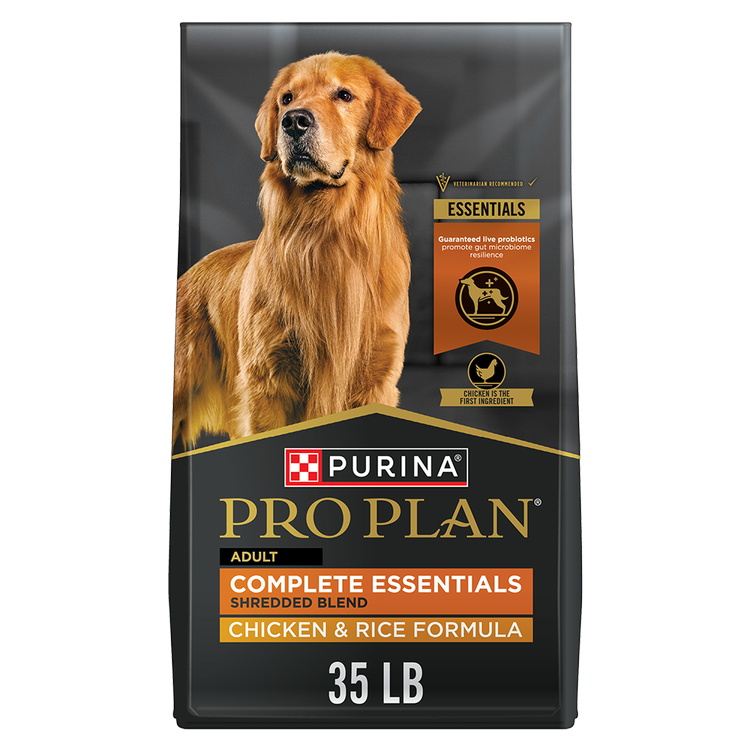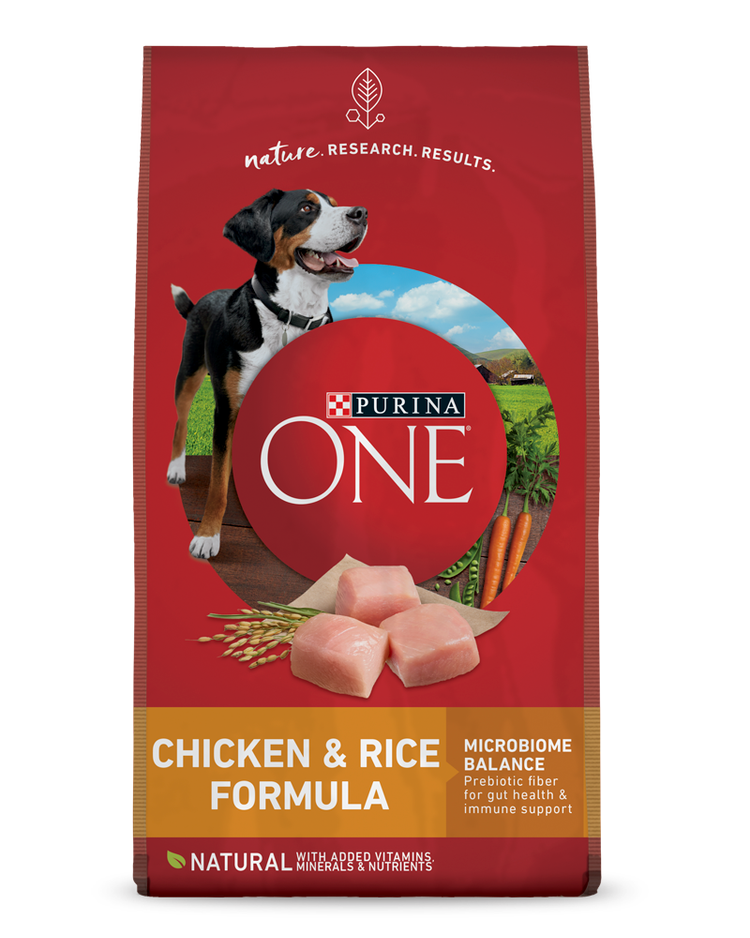Caring for Dog Teeth at Different Ages


A dental routine is a critical part of your pet’s overall health playbook. Your dog will need different types of dental care at different stages of life, however.
For example, the enamel on puppy teeth is not as strong as adult teeth. This makes their teeth sensitive, vulnerable and needing extra care, yet not strong enough for some adult dog dental care treatments. The good news is that puppies are in a learning stage of life where it may be easier to incorporate an oral health routine.
Meanwhile, adult dog teeth are far less fragile and can withstand a more rigorous dental routine. Caring for adult dogs’ teeth is especially important because they need them for the rest of their lives; like human adult teeth, they don’t grow back.
Older dogs have a higher risk of dental conditions because their teeth are more fragile and have worn down over time.
Puppy Teeth
Taking care of puppy teeth can be tricky. Puppies’ mouths and teeth are constantly growing and going through changes, which makes it especially important to keep an eye on their dental health.
By the age of three to four weeks, your puppy should have started growing their first set of teeth. Just like people, dogs grow a set of puppy teeth before their adult teeth come through.
Once their puppy teeth have come in, it takes about three to four months before they begin to fall out and adult dog teeth begin to take their place. Despite the brief existence of your dog’s puppy teeth, it’s still important to look after them.
After all, at this young age, puppies put things in their mouth to learn about the environment around them. This means they get a lot of use and are subject to a lot of wear and tear, considering that they’re not as strong as adult teeth.
The below tips can help keep your puppy’s teeth healthy throughout their first year.
- Check teeth regularly: Since your puppy’s teeth are constantly changing, it’s important to check them on a frequent basis. This allows you to identify any early signs of a dental condition developing in your dog’s mouth, such as an abnormal bite (malocclusion) or a persistent baby tooth that hasn’t fallen out with the others.
- Provide your puppy with toys: Chew toys are important while your puppy is going through the teething process. They will not only help to keep their teeth clean but will also soothe the pain from teething. When picking a chew toy for your puppy, make sure to find one that’s age appropriate by seeking out puppy toys vs. adult dog toys. Look for a toy that’s soft but durable and large enough that your puppy can’t swallow it, but not too large that they can’t fit it in their mouths.
- Keep your veterinarian in the loop: After about three to four months, your puppy’s teeth should start to fall out. Keep an eye out for any stubborn baby teeth that may be slow to fall out and contact your vet if you’re concerned. Meanwhile, talk about your puppy’s dental development at every checkup.
- Brush their teeth: Brushing your puppy’s teeth from a young age is an important part of dog dental health. Not only does it help keep their teeth healthy, but it also gets them used to the idea of brushing from a young age. Start off by slowly rubbing your fingers across your puppy’s mouth. Once your puppy has grown accustomed to this, start to use toothpaste on your finger and eventually a toothbrush. You can also wrap gauze around your finger and run it along their teeth and gums to acclimate them. Remember to praise and reward your dog after each session of cleaning.
- Discuss dental health annually with your veterinarian: Get in the habit of making dental health discussions a part of your dog’s annual exam. Asking veterinarians for their insight and feedback can help you keep your puppy’s oral health in great shape well into adulthood.
Adult Dog Teeth
Your dog’s adult life begins at about 12 months, depending on their breed. At this time, they’ll have a full set of permanent teeth needing proper care. Here are a few ways to do that effectively:
- Cleaning your dog’s teeth: Once your dog has moved into their adult phase, it’s even more important to brush their teeth. You should try to brush your dog’s teeth every day, but even doing it twice a week can make a difference in their dental health. When cleaning your dog’s teeth, try to keep the brush at a 45-degree angle.
- Water additives: Water additives are relatively new and designed to promote clean teeth and fresh breath for dogs. While water additives may support healthy teeth and gums, they should not be a substitute for brushing and daily chew sticks. Ask your veterinarian for more information.
- Introduce dental dog chews: Dog chews are an excellent way for dogs to boost their own tooth health. Dental chews with a porous texture can go a long way toward reducing tartar buildup in your dog’s mouth. Dental chews often come with natural ingredients or fluoride to promote healthy dog teeth and gums. Always supervise your dog while they’re eating a dental chew.
- Schedule a teeth cleaning appointment: Some dogs may never need a professional teeth cleaning, while others may require one every few years. These cleanings, done under anesthesia, help your veterinarian get a better overview of your dog’s oral health while removing plaque buildup and tartar. These cleanings also allow your veterinarian to assess if any minor surgeries, like tooth extractions, may be necessary.
Senior Dog Teeth
It’s essential to keep your elderly dog’s teeth and gums healthy and strong. Senior dogs are at a higher risk of having gum conditions than younger dogs. Common dental issues in older dogs include:
- Cavities: Cavities, or ‘caries,’ are decay on the tooth that can appear with increased frequency in older dogs. Make sure to regularly check your dog’s mouth for dull spots on the enamel or areas of the tooth that seem dark or decayed, as they can lead to pain and tooth loss.
- Dog tooth extraction: As dogs age, they may need to have some teeth removed. The need for tooth extraction often stems from broken or cracked teeth, tooth root infections or abscesses. This process involves a general anesthetic. If you feel that a tooth extraction may be necessary, have a conversation with your veterinarian.
It’s an essential part of grooming to make sure you carry out your dog’s usual dental routine from puppyhood into his senior years. This means regular brushing and use of dental rinses if necessary. A daily dental chew can have positive effects as well.
Get more tips on canine dental care from our experts on our Pet Expertise page.
Related articles

Reward Yourself with myPurina
Earn and redeem rewards for Purina products with the myPurina app.






